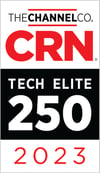The technology news site Data Centre Dynamics reported that the pandemic actually has been good for the data center, making its role in supporting the workplace even more important than before. Focus on the data center has led to renewed efforts to reduce infrastructure energy use and to increase the agility and availability of the data center.
Companies that are looking to transform their data centers are faced with a wealth of choices. Two options are switching to a hyperconverged infrastructure (HCI) or adopting software-defined storage (SDS). Before making such a big decision, your company should look at the advantages of both options, determine how the solutions align with your business goals, and decide if you even need to choose between them.Advantages of HCI
For companies looking to create a leaner and more agile data center infrastructure, HCI is a great choice. All the key components of a data center environment are packaged in a single chassis, including storage, compute, and networking.
Choosing to go with HCI eliminates the waste of overprovisioning storage resources. There is no need to predict capacity or the increasing performance demands of applications. Instead, additional nodes can be added as needed, meaning precious data center real estate and power isn’t being thrown away on idle storage resources.
When you scale storage in HCI, all the supporting compute and networking resources scale up as well. The nodes can auto-scale and auto-balance the workloads. With HCI systems, your company is capable of scaling by a few nodes or up to thousands as workloads increase.
HCI is also easy to manage and update. The technology uses a single pane of glass for management, allowing you to control storage, compute, and networking through one interface. Upgrades can be performed with one click, ensuring your data center is always up to date.
Advantages of SDS
SDS is one of the building blocks of the software-defined data center (SDDC). SDS empowers companies to store the massive volumes of data that are being generated by connected devices in the internet of things (IoT), social media feeds, and remote workplaces.
SDS also eliminates the data silos that are created by geographically dispersed worksites and endpoints by using software to virtualize the storage behind a server. Like HCI, SDS has centralized management through a single pane of glass.
With SDS, built-in data management allows your company to pool and tier data storage so that storage media is used more efficiently. For example, frequently accessed data is sent to high-performance storage, ensuring that these resources aren’t wasted archiving data.
Why You Can't Lose
Is this an either/or decision? HCI and SDS both use software to abstract storage from the underlying hardware and both have unified management. However, the two solutions have different use cases. Instead of choosing between technologies, your company could run them both to satisfy the needs of different workloads.
If your company wants to progress in your data center transformation journey, HCI and SDS are both great options that can help you manage data and use resources more wisely. Working with the right technology partner will help you choose which solution is right for you and get on the path to implementation.
ProActive Solutions specializes in data center transformation, taking a consultative approach to guiding your company through the process of decision making, planning, and execution. We offer leading HCI and SDS solutions with the option to turn your entire data center infrastructure into an SDDC.
Learn more about HCI, SDS, and other data center transformation solutions. Read the ProActive eBook The Complete Guide to Software-Defined Everything.



